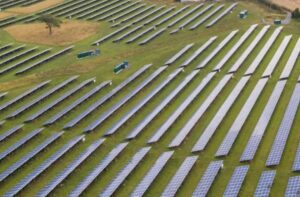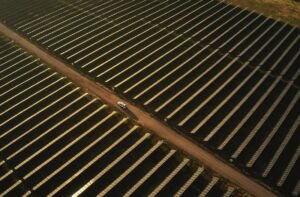An ARENA-funded, Australia National University-led study claims to have found the right mix of ingredients that could make solar PV generation even cheaper and more efficient, through a combination of silicon with perovskite.
The ANU team, in collaboration with researchers from the California Institute of Technology, have been working on the so-called tandem solar cell as part of an industry-wide research to increase the power conversion efficiency of silicon PV, and thus further reduce the cost of solar electricity.
This study, funded by the Australian Renewable Energy Agency as part of a project in collaboration with UNSW and Monash University, focused on the way tandem solar cells – one cell on top of the other – are joined together.
According to the ANU team, combining two materials in a tandem arrangement can be a difficult task, but once you get it right the efficiency of the solar cell goes up very quickly – well beyond what is possible with silicon by itself.
And they claims their method of doing this is one of the simplest ever developed.
“We have constructed a tandem structure that is unconventional,” said study co-author Dr Heping Shen from the ANU School of Engineering.
“When engineers combine two cells they usually need to have an interlayer to allow electrical charge to be transferred easily between the two cells, so they can work together.”
In equally simple terms, says co-author Dr Daniel Jacobs, it is a bit like making a club sandwich with extra bread in the middle – it plays a structural role, but the sandwich would taste better without it.
“We’ve found a new way to simply stack the two cells together so they’ll work efficiently with each other – we don’t need the interlayer, or extra bread, anymore,” Dr Jacobs said.
The team says it minimises energy waste and simplifies the solar cell structure, potentially making it cheaper and easier to produce.
“With tandems it’s crucial to demonstrate a fabrication process that is as simple as possible, otherwise the additional complexity is not worthwhile from a cost perspective”, Dr Jacobs said.
“Our structure involves one less fabrication step, and has benefits for performance too.
“We’ve already reached 24 per cent improvement in efficiency with this new structure, and there’s plenty of room left to grow that figure.”
Perovskite has been one of the great hopes of next-gen solar technology for some years now, with companies like Oxford PV using it to achieve a world record 27.3 per cent conversion efficiency for a single-junction silicon solar cell.
But the quest has claimed some scalps, too. Just last week one of Australia’s longest running solar technology developers, GreatCell Solar, called in voluntary administrators after failing to find funds to support a $25 million project to prove its technology.
GreatCell, originally known as DyeSol, was investigating the potential of a number of 3rd generation solar PV technologies, including perovskite cells. It spent more than $130 million on research, and raised more than $100 million from investors, and was seeking more.
The company announced the appointment of voluntary administrators on Tuesday following after what it called a “series of unfortunate and unwelcome developments” in recent week, including the death of chief scientist, Dr Hans Desilvestro, in a mountaineering accident on the Swiss Alps.
One of the key problems preventing progress with perovskite solar cells has been their stability, particularly when exposed to heat and moisture.
The ANU-led research team says its tandem cells underwent an industry standard damp and heat test, and maintained ~89 per cent of their original output after testing for >1000 hours, “putting them very close to passing protocol … which requires 90 per cent retained efficiency.”
In conclusion, the team says, “we have demonstrated two proof-of-concept 2-T perovskite/Si tandem devices that function without a conventional interlayer between their subcells.
“Jointly, our work highlights the potential of emerging perovskite photovoltaics to enable low-cost, high-efficiency tandem devices through straightforward integration with commercially relevant and emerging Si solar cells.”








